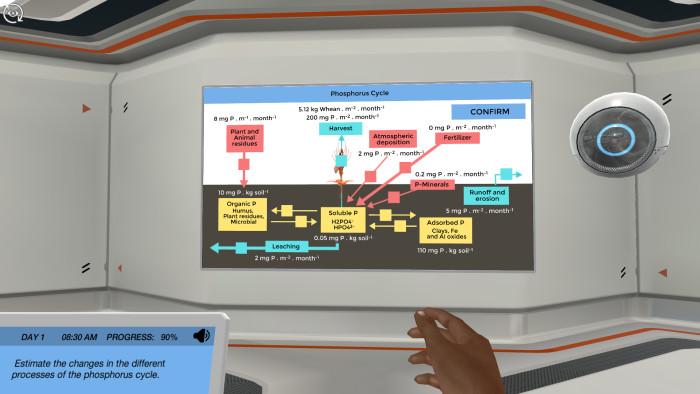
Ecosystem dynamics can be demystified and brought to life for students through the power of interactive models and simulations. By utilization of simulations, as they become virtual ecologists and observe the ripple effects of their actions in real time, they can gain a practical perspective on the subject.
One way to involve your students is by utilizing Labster’s Ecosystem Dynamics Simulation. As collect soil samples, assess the status of fields, and make decisions on the “appropriate amount of fertilizer” to sustainably increase crop yield while minimizing environmental impact, they will understand the dynamics of the phosphorous cycle in a better way. Through interactive choices and measurements, they can also gain firsthand knowledge of other related ideas of ecosystem dynamics.
Ecosystem dynamics can be demystified and brought to life for students through the power of interactive models and simulations. By utilization of simulations, as they become virtual ecologists and observe the ripple effects of their actions in real time, they can gain a practical perspective on the subject.
One way to involve your students is by utilizing Labster’s Ecosystem Dynamics Simulation. As collect soil samples, assess the status of fields, and make decisions on the “appropriate amount of fertilizer” to sustainably increase crop yield while minimizing environmental impact, they will understand the dynamics of the phosphorous cycle in a better way. Through interactive choices and measurements, they can also gain firsthand knowledge of other related ideas of ecosystem dynamics.

Educators can exploit the power of games and activities in their classrooms to enhance students’ comprehension of abstract subtopics of ecosystem dynamics. These interactive experiences allow students to observe and analyze real-world scenarios, promoting a deeper understanding of complex ecological interactions.
Through games, students can explore cause-and-effect relationships, make decisions, and witness the consequences within a controlled environment. Labster gamifies the learning journey by simulating the effects of fertilizers on the phosphorus cycle in an ecosystem. As students analyze the phosphorus cycle, measure dissolved phosphorus, and assess different amounts of fertilizer to maximize crop yield without harming the environment, they learn the dynamic nature of the ecosystem.

Technology overcomes the shortcomings of conventional classroom teaching by providing immersive learning experiences. This is not only facilitated by access to real-time data and resources but also by the promotion of student engagement and collaboration. By utilization of technological interventions, educators can enable personalized and self-paced learning opportunities which can cater to different learning styles.
You can plan to include Virtual Reality (VR) and Augmented Reality (AR) technologies that allow students to explore and interact with complex ecological processes and experience environmental changes in a more immersive way. The use of Simulations and Modeling Software can any day improve students’ abilities to analyze real-world scenarios and draw connections.
Discover Labster's Ecosystem Dynamics virtual lab today!
Educators can introduce learners to a range of exciting career prospects in the field of ecosystem dynamics. These prospects include becoming ecologists, environmental scientists, conservation biologists, environmental consultants, wildlife biologists, restoration ecologists, and environmental educators.
These professions involve studying ecological systems, understanding the impact of human activities on ecosystems, conserving biodiversity, managing natural resources, restoring degraded environments, and educating others about the importance of ecosystem dynamics. By showcasing these career pathways, you can inspire learners to embark on fulfilling journeys where they can contribute to the understanding, conservation, and sustainable management of ecosystems, making a positive impact on our planet's future.
The topic of ecosystem dynamics is crucial for learners who aim to make a difference in the environment’s health. By quoting the real-world applications of learning ecosystem dynamics, you can inspire your students to learn the subject with motivation and passion.
Some causes that can be catered to with a better understanding of ecosystem dynamics to be mentioned in your next class are:
Educators must employ novel strategies while teaching students about ecosystem dynamics. Labster supports educators in devising innovative teaching strategies through the provision of virtual simulations that can enable students to develop a more comprehensive and interconnected perspective of ecosystems. As we try to instill a sense of appreciation for the complexity and fragility of natural systems in our students, we should continually aim to empower them to become informed environmental stewards.

Try our free 30-day All Access Educator's Pass today and teach with the Ecosystem Dynamics simulation alongside 300+ other virtual labs!

Labster helps universities and high schools enhance student success in STEM.
Request DemoRequest a demo to discover how Labster helps high schools and universities enhance student success.
Request Demo